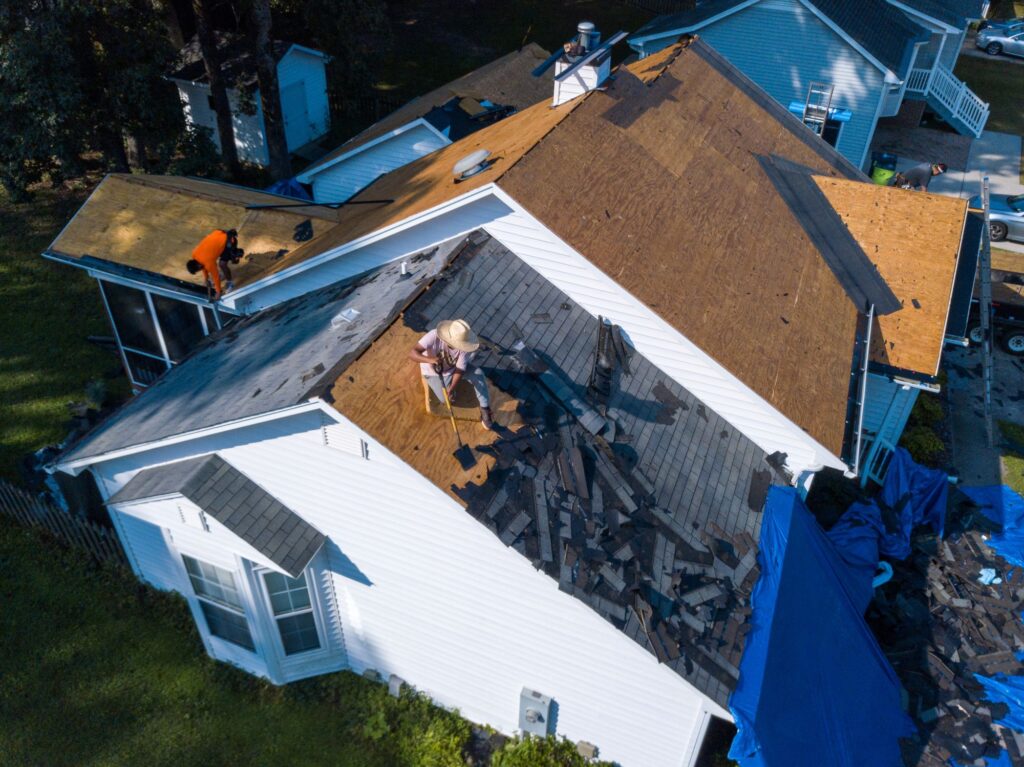A roof is a crucial component of any home. It protects you and your family from the elements and keeps your property safe and dry. However, over time, your roof can begin to deteriorate, and when that happens, it’s important to consider replacement. An old or damaged roof can lead to leaks and water damage, which can cause costly repairs and even compromise the structural integrity of your home. Replacing your roof before it’s too late can save you a lot of money and trouble in the long run. Call a certified roofing contractor in Florida to help you with your roofing project.
The average cost of roof replacement in the United States for 2021 was around $7,500 to $11,000. However, this is just an estimate, and the actual cost can vary depending on several factors, such as the size and slope of your roof, the type of materials you choose, and the location of your property. In this blog post, we will discuss these factors in detail to help you understand how they affect the cost of roof replacement.
Factors Affecting Roof Replacement Cost
These are some of the factors that can affect the cost of roof replacement:
1. Roof Material
The type of material you choose for your roof will greatly impact the cost of replacement. Asphalt shingles are the most common and affordable option, while metal, wood, clay, and slate are more expensive but also more durable and long-lasting. For instance, metal roofs are more expensive than asphalt shingle roofs, but they can last up to 50 years, while asphalt shingle roofs usually last between 15-20 years.
2. Roof Size
According to this Murfreesboro company and many other roofing service providers, the size of your roof is a significant factor that can affect the cost of replacement. The larger your roof, the more material and labor costs will be involved. The cost of roofing materials is typically measured per square foot, so the bigger your roof, the more expensive the materials will be. A larger roof will also require more labor hours, which will increase the overall cost of replacement.
3. Roof Slope
The slope of your roof can also affect the cost of replacement. A steeper roof will require more safety equipment and more labor hours, which will increase the cost of replacement. A flat roof, on the other hand, is easier to work on, and the labor costs will be lower.
4. Property Location
The location of your property can also affect the cost of roof replacement. If you live in a remote area, the cost of transportation and delivery of materials may be higher. In some cases, local building codes may also affect the cost of replacement. For instance, if you live in an area with high wind or snow loads, you may need to install a more expensive roofing system.
5. Permits
Depending on your location, you may need a permit to replace your roof. The cost of permits varies depending on the location and the type of work being done. In some cases, a permit may be required before work can begin, and failure to obtain a permit can result in fines or legal issues.
6. Dump Fees
Dump fees are another factor that can affect the cost of roof replacement. When you replace your roof, the old roofing materials need to be removed and disposed of properly. Dump fees are the costs associated with hauling away and disposing of the old roofing materials.
The cost of dump fees varies depending on the location and the amount of waste being disposed of. In some areas, dump fees can be quite expensive, particularly if there are limited disposal options.
To minimize the cost of dump fees, it’s essential to work with a roofing contractor who has experience and knowledge of local regulations and disposal options. A professional roofing contractor will have established relationships with local waste management companies and will be able to negotiate lower dump fees.

Additional Costs Of Roof Replacement
These are the other cost factors that are worth mentioning:
1. Removal of Old Roofing
If your old roof needs to be removed before the new one can be installed, this will add to the total cost of the project. The cost of removing the old roofing materials will depend on the size and complexity of your roof, as well as the type of material being removed. For example, removing an asphalt shingle roof is typically less expensive than removing a metal or tile roof.
The cost of removing the old roofing materials will also depend on the condition of your old roof. If the old roof is in poor condition, it may be more difficult and time-consuming to remove, which will add to the cost of the project. Additionally, if there are multiple layers of roofing that need to be removed, the cost will be higher than if there is only one layer.
2. Structural Repairs
If your roof has structural damage or needs repairs, this will also increase the cost of replacement. A damaged roof can compromise the structural integrity of your home, and it’s important to address any issues before installing a new roof.
The cost of structural repairs will depend on the extent of the damage and the complexity of the repair. For example, if there is significant water damage, the cost of repairing or replacing damaged rafters or decking can be quite high.
Conclusion
The cost of roof replacement can vary depending on several factors, including the type of material used, the size and slope of your roof, your property location, and the need for permits. By considering these factors and working with a reputable roofing contractor, you can make an informed decision about your roof replacement project and budget accordingly.






